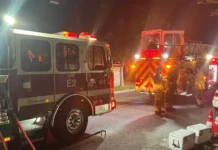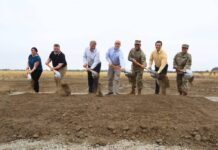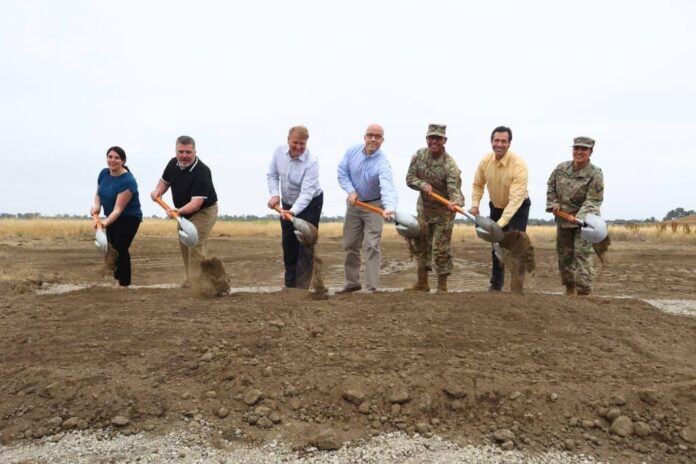By Staff Sgt. Crystal Housman, California National Guard Public Affairs
A 100-acre solar project that will bolster the power grid in Southern California and provide two weeks of emergency power for Joint Forces Training Base in Los Alamitos, broke ground on May 19.
The 26-megawatt solar project will be constructed, owned and operated by Bright Canyon Energy on a 30-year land lease in a public-private partnership between the energy company, the Department of the Army’s Office of Energy Initiatives, and the California National Guard.
“Energy resilience is something that we as a state have been actively pursuing, just like the Department of the Army,” said U.S. Army Maj. Gen. Michael Leeney, commander of the California Army National Guard’s 40th Infantry Division. “This project only reinforces the commitment that we have to move forward.”
The project is being built with the installation’s emergency response mission in mind and includes a 20 MW / 40 megawatt-hour battery, 3 MW backup generators and a microgrid control system that allows the project to disconnect from the traditional power grid and operate autonomously.
While the backup generators are included to ensure the base has power under any condition, during a 14-day grid emergency, the installation expects to be supported by carbon-free energy resources 99% of the time.
If the larger power grid goes out in the greater Los Angeles Area, the base will continue to have power, said Paul Farnan, principal deputy, assistant secretary of the Army for installations, energy and environment.
“We are in a world where we have to operate no matter what is happening outside of our fence line, and this base is a perfect example of it,” Farnan said.
Describing the base as the “hub of emergency operations in Southern California,” Farnan stressed the importance of keeping the installation powered during natural or human-made disasters.
Joint Forces Training Base is home to a variety of tenants with emergency response roles. The 40th Infantry Division maintains its headquarters on the base, along with a battalion of Black Hawk helicopters used for wildland firefighting, passenger airlift, hoist rescues and military missions. Cal Guard’s 9th Civil Support Team, which specializes in detection and response to weapons of mass destruction, also makes its home on the base.
The California Governor’s Office of Emergency Services’ Southern Regional Emergency Operations Center is on the installation, and FEMA stores its regional disaster supply stock on the base.
The installation’s airfield boasts an 8,000-foot runway capable of landing the military’s largest cargo planes for passenger transport or supply drops.
Leeney, who previously served as the installation’s garrison commander, reflected on being part of the project’s first meeting in 2014.
“I find it very gratifying that here I am, eight years later,” he said. “I’m about to help put a shovel with dirt on this project.”
During normal operations, the project will put carbon-free power back into the grid.
Bright Canyon Energy will sell the power to San Diego Gas & Electric via the Southern California Edison transmission system.
Breaking ground is a step forward for the base and for the Army, which released its climate strategy earlier this year and became the first military branch to release such a plan. Farnan said he wants to put a similar microgrid project on every Army base.
“With this project, Los Alamitos, this installation, is leading the Army,” Farnan said.
Construction of the project is expected to finish next year.















